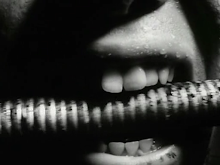By A.J. Detisch
I’ve read that nostalgia runs in cycles, usually twenty years, where age groups will bring back into relevance those immortal, fuzzy things from their childhood's cultures.
I'm waiting for that to kick in with my generation of action film directors. I don’t like the direction action movies have been taken because they just don't seem as glorious anymore. As I sit through movies like Doug Liman’s The Bourne Identity or Christopher Nolan’s Batman films, I find myself wondering if I had just watched an action film at all. Don’t get me wrong, Bourne’s is enjoyable, but there was something about the action that made it seem as though Liman was trying to hide the fact that he made an action movie at all.

Those who agree might say it is the way in which the film was cut. The editing rhythms in Bourne try to keep pace with the slick fight choreography- the jabs, kicks, punches. If you have a minute, check out the film’s first fight scene: Let’s analyze:
- The scene starts out with shaky, uncertain handheld camera. Jason and Marie exchange glances and a man DIVES through the window – it’s a gunman.
- Jason KICKS the gunman’s feet from under him and thrusts his arm up to offset the bullets flying out of his gun.
- They wrestle around a little bit, they cut back generously to Marie who’s scared, and Jason wrestles the gun out of his hand. The shot lingers on the gun and then-
- The fight breaks out.
- Cuts are sporatic (milliseconds long), the two fight. The gunman flicks out a concealed knife.
At this point in the scene I scratched my head and thought “is it the editing rhythms that are throwing it off, or is it the way Liman does coverage in general? I noticed that in this fight scene, Liman implements a highly inductive method of showing close ups of exactly what is necessary to move on to the next shot. We see the knife, Marie screams, they go back at it. Before this, at fifty seconds into the clip, a low angle shows Jason KICK at the gunman, but the audience has NO IDEA whether or not he actually kicks him, we just assume he did because of the sound effect.
To me, this is not action in the action film sense of the word. In reaction, I always feel very nostalgic for the way the action directors of my childhood did action coverage. What would James Cameron have done with this scene, or John McTierrnan? Neither have been very prolific in the 2000’s and it is going to be fascinating to see how Cameron’s Avatar is going to handle its action sequences in the post-Bourne era. I regard Terminator 2 and True Lies to be very satisfying action films because you see the action play out; every blow dealt is seen.
Take this classic scene from True Lies (“the toilet shootout”). The scene is fluid -- the cameras are fluid, probably on a crane or GOOD steadicam, confidently floating around the action. The cuts are quick, but the action is never “avoided.” When I say avoided, I mean Cameron keep his cuts in the same general spatial area (he’s not cutting back and forth from wide angle to close up) to keep it feeling like a long take, even though it’s far from it.
I would argue this allows the viewer to enjoy the action more because the coverage keeps things connected. At the 38 second marker, Arnie kicks the handgun and the viewer can watch it glide down the wet floor. Then it cuts to a minimally wider angle to see the fight continue. I would assume someone like Liman or Paul Greengrass would do this inductively, with a close up of the gun that gets kicked away, and then instantly back into a wider angle of the fighting, breaking the spatial continuity of the action completely.
It feels like an “economy of action” is a tool being wielded by modern action directors, most probably to keep their stories moving. This attitude, however, labels long action sequences (which are nuanced and take their time) as excess. I feel that is what these scenes are subconsciously saying.
Perfect example: Christopher Nolan’s Batman films. The first film clocks in at two hours and fifteen minutes, the second over two and a half hours. The scripts are bursting at the seams with plot and action. How did Nolan handle this? He TRIMMED DOWN THE ACTION SEQUENCES.
Let’s compare the Batman’s infiltration of the Ritz from Batman Forever to the Boss Maroni takedown scene from The Dark Knight. In Forever Batman jumps through the glass roof into a mini pool area, then jumps from it again to take down a slew of henchmen. The scene has a sprawling effect, moving from the pool to the floor, ending up in an underground trap Two Face set up.
In The Dark Knight, a significantly longer movie, the Maroni takedown is quick. Maroni (Eric Roberts) notices him, Batman punches a few guards, and then interrogates him. This was a perfect set-up for an action scene-- balconies, strobe lights, henchmen-- and even though I enjoyed the scene, I missed that “sprawling” effect.
The whole Batman film franchise has successfully transcended the superhero genre and is seen by most critics as a serious crime-drama. The cost of this, unfortunately, meant cutting any action that wasn’t relevant to the plot. The two and a half hours moved quickly, but I sure did miss those henchmen takedowns.














